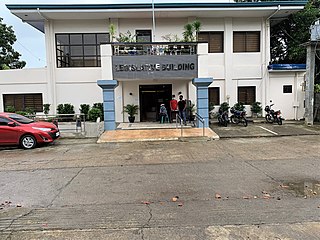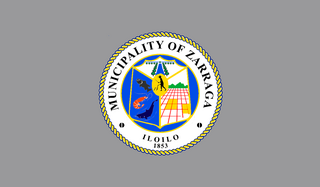
Buenavista, officially the Municipality of Buenavista, is a 2nd class municipality and the largest settlement in the province of Guimaras, Philippines. According to the 2020 census, it has a population of 52,899 people.

Leganes, officially the Municipality of Leganes, is a 4th class municipality in the province of Iloilo, Philippines. According to the 2020 census, it has a population of 34,725 people.

Barotac Nuevo, officially the Municipality of Barotac Nuevo, is a 2nd class municipality in the province of Iloilo, Philippines. According to the 2020 census, it has a population of 58,176 people.

Altavas, officially the Municipality of Altavas, is a 4th class municipality in the province of Aklan, Philippines. According to the 2020 census, it has a population of 25,639 people.

Madalag, officially the Municipality of Madalag, is a 4th class municipality in the province of Aklan, Philippines. It is Aklan's largest municipality by land area and also the most sparsely populated. According to the 2020 census, it has a population of 18,890 people.

Sibunag, officially the Municipality of Sibunag, is a 4th class municipality in the province of Guimaras, Philippines. According to the 2020 census, it has a population of 23,162 people, making it the least populated municipality in the province.

San Lorenzo, officially the Municipality of San Lorenzo, is a 5th class municipality in the province of Guimaras, Philippines. According to the 2020 census, it has a population of 29,444 people.

Anilao, officially the Municipality of Anilao, is a 4th class municipality in the province of Iloilo, Philippines. According to the 2020 census, it has a population of 30,520 people.

Badiangan, officially the Municipality of Badiangan, is a 4th class municipality in the province of Iloilo, Philippines. According to the 2020 census, it has a population of 27,056 people.

Batad, officially the Municipality of Batad, is a 5th class municipality in the province of Iloilo, Philippines. According to the 2020 census, it has a population of 22,157 people.

Estancia, officially the Municipality of Estancia, is a 2nd class municipality in the province of Iloilo, Philippines. According to the 2020 census, it has a population of 53,200 people.

Igbaras, officially the Municipality of Igbaras, is a 3rd class municipality in the province of Iloilo, Philippines. According to the 2020 census, it has a population of 32,197 people.

Lambunao, officially the Municipality of Lambunao, is a 1st class municipality in the province of Iloilo, Philippines. According to the 2020 census, it has a population of 81,236 people.

Lemery, officially the Municipality of Lemery, is a 4th class municipality in the province of Iloilo, Philippines. According to the 2020 census, it has a population of 31,414 people.

Leon, officially the Municipality of Leon, is a 2nd class municipality in the province of Iloilo, Philippines. According to the 2020 census, it has a population of 51,990 people.

Maasin, officially the Municipality of Maasin, is a 3rd class municipality in the province of Iloilo, Philippines. According to the 2020 census, it has a population of 38,461 people.

Oton, officially the Municipality of Oton, is a 1st class municipality in the province of Iloilo, Philippines. According to the 2020 census, it has a population of 98,509 people making it as the most populous town in the province and the entire Panay island.

San Dionisio, officially the Municipality of San Dionisio, is a 4th class municipality in the province of Iloilo, Philippines. According to the 2020 census, it has a population of 39,048 people.

San Miguel, officially the Municipality of San Miguel, is a 4th class municipality in the province of Iloilo, Philippines. According to the 2020 census, it has a population of 30,115 people.

Zarraga, officially the Municipality of Zarraga, is a 4th class municipality in the province of Iloilo, Philippines. According to the 2020 census, it has a population of 27,305 people.



























